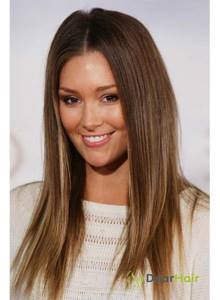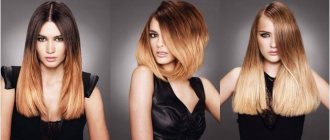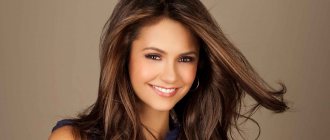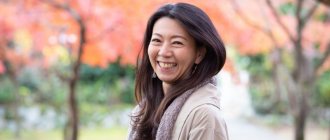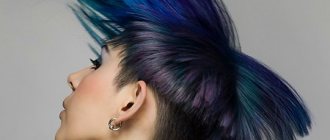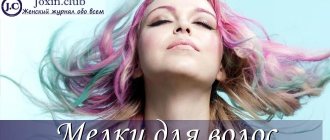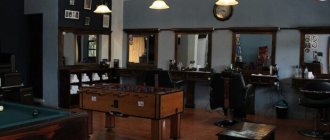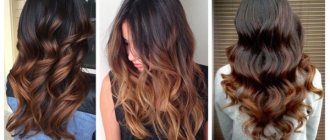What is it and how does it differ from other types?
The uniqueness of 3D highlighting is that hair changes shades under different lighting conditions.
Thanks to a special technique, which consists of lightening some strands and darkening others, a smooth transition of color on the hair is created, moreover, visually the hairstyle looks more voluminous.
This dyeing technology should not be confused with coloring, which uses shades of different colors; chaotic mixing is not allowed.
When 3D highlighting, shades within the same color wheel are used .
The peculiarity of this innovative technique is the use of special ionic paints. The number of tones when highlighting varies from 2 to 3, 4, while there is a main color, which you should stick to when choosing shades. Due to the play of light and special paint, the effect of coloring, lamination and bronding of hair is simultaneously achieved, which distinguishes 3D highlighting from all other methods of coloring.
To achieve optimal results, you need to work correctly with the color wheel. The dominant shade, as close as possible to the natural hair color, and complementary shades should complement each other and merge together .
Choosing a coloring technique depending on hair length
The length and structure of the hair are criteria that help you choose the right coloring method. In addition, the shape of the face and color type of appearance are taken into account.
The main rule when dyeing is that cold and warm tones in one hairstyle do not mix.
Coloring is applied to all types of hair - straight and curly, short and long, but the effect will be different in each case.
For short hair
Coloring on short hair looks stylish, makes the outline clear, makes the hair voluminous and interesting. They are painted with shades close to natural color, or with contrasting bright accents.
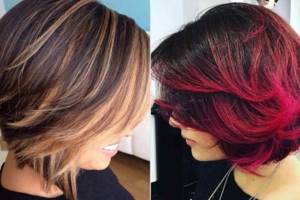
Such fashionable ultra-short haircuts as pixie and garcon become catchy and expressive with the help of longitudinal toning. Zonal coloring of individual torn asymmetrical strands and long oblique bangs looks great. An interesting image is created by the “salt-pepper” color – lightening the hair at the roots and contrasting dark ends.
Classic women's haircuts, bob, bob, bob-bob, combined with coloring, take on a new fresh breath. Longitudinal coloring makes the hairstyle soft, elegant, transverse clear transitions emphasize the structure and complexity of the haircut.
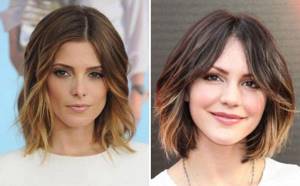
The peculiarity of dyeing for short hair is that you should not apply many shades. If they are not long enough, they will simply merge, making the image washed out and inharmonious. Three-color coloring is considered optimal, but no more than 4-5 shades.
The best coloring techniques are American, sombre, chambray, balayage, and bronzing. For brave ladies, a good painting method is pixel, rainbow or neon coloring.
For medium length hair
Medium length hair is the best option for coloring. Multi-color dyeing makes the strands shimmery, deep, and adds an expensive effect. Sufficient length allows you to use a variety of methods - full, partial, soft, creative. Longitudinal coloring adds romantic, elegant notes to the image.
The cascade haircut goes well with sombre, balayage, and bronzing. Contrasting strands add originality to the hairstyle.
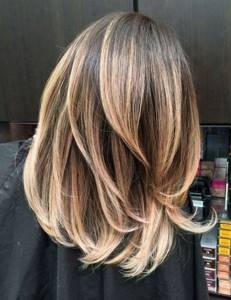
The clarity of the lines and the structured shape of such haircuts as an elongated bob, long bob, bob with asymmetry, is achieved by dyeing ombre, sombre, balayage. Expressive accents are created by zonal tinting of bangs and strands near the face. Experienced hairdressers are able to do coloring in such a way that when you change the styling method, the hair color changes.
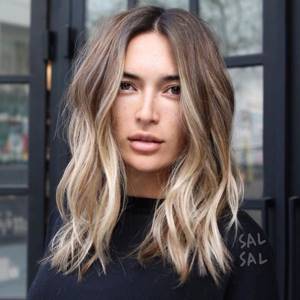
For long hair
Long hair creates unique opportunities for experimentation and the use of original color schemes. Coloring enriches the strands, ennobles them, gives the hairstyle a precious shine and a sense of depth using a 3D effect.

All types of coloring look great on long hair - clear ombre, soft sombre and balayage, bright chambray. Partial coloring is often used - this method is more gentle on the hair. Romantic light highlights of babylights coloring will make the hairstyle light and mysterious.
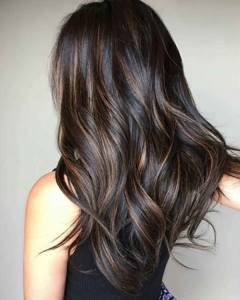
As a result of proper coloring, a multi-level cascade haircut acquires a harmonious shape. The discreet staircase becomes voluminous and varied. Coloring revitalizes long straight and curly hair, organizes thick curls, and adds volume to thin strands.

It is important to understand that only healthy and well-groomed hair looks beautiful. Correctly performing coloring over a significant length is difficult and requires skill. It is not recommended to use home painting.
Advantages and disadvantages
Like any type of coloring, 3D highlighting has a number of pros and cons.
Positive sides:
- the use of gentle ionic dyes containing essential oils and other natural ingredients;
- additional volume, which is achieved thanks to color tints;
- suitable for hair of any length and structure;
- the hairstyle always looks neat even without styling;
- hair is not exposed to aggressive chemical effects, because no need to lighten strands in several stages;
- lasting results that do not require frequent visits to the salon.
Negative sides:
- requires the hand of a master, difficult to do at home, especially on your own;
- if the main and additional shades are incorrectly selected, the hairstyle will look artificial and contrasting;
- Quite an expensive service from a professional technician.
Is it possible to do 3D coloring at home?
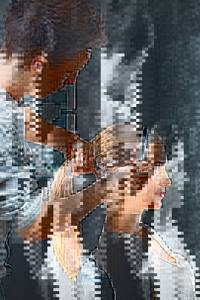
3D coloring at home (and even on your own) is a useless exercise. Only an experienced professional who has performed this trick more than once can achieve the effect of volumetric color on hair. In addition, the master must be a very good colorist in order to correctly select complementary colors that will look organic on the hair. To do this, of course, you need a wide range of professional dyes and the ability to easily select or mix the desired shade.
Therefore, it is better to trust the pros. Despite the fact that the technology is quite new, it has already become widespread.
Important! The session lasts at least 2.5 hours, but it's worth it.
Features of highlighting on light, dark, light brown curls
3D coloring technology has a number of features depending on the natural hair color:
- Blonde hair: the technique allows you to remove yellowness and give a natural wheat, ash, golden hue to your hair. On blondes' locks, the effect of sun-bleached strands is created.
- Fair-haired: the technique perfectly enriches, gives a spectacular, deep shade. It is recommended to choose cream, platinum, ash and ivory shades. The shade of coffee with milk and caramel looks very impressive.
- Dark-haired: in this case, the opinions of hairdressers are ambiguous. You can try using different shades of chocolate, cinnamon, baked milk and almond, cognac, amber, frosty chestnut, but the effect may be faintly noticeable.
What it is?
The 3D hair coloring technique appeared not so long ago, but has already become incredibly popular. Of course, it allows you to achieve amazing results. The hairstyle seems more voluminous, and the hair is shiny and attractive, which immediately catches the eye in the photo.
3D coloring is a rather complex procedure that involves the use of several shades.
Soft transitions are created that look like iridescence in the sun. This technique will make the hair color more saturated and unusual, as well as refresh the hairstyle and focus on its individual parts.
Photo
Next, look at this highlighting of dark, light and light brown curls before and after the procedure in the photo, which clearly shows what three d coloring is.
Step-by-step painting algorithm
The 3D highlighting coloring technique is quite complex to perform , so to achieve the correct result you must adhere to a strict algorithm. First, you should be puzzled by the choice of dye. It is necessary to choose paints without ammonia, with essential oils and other moisturizing natural ingredients. The color is selected individually. Shades must be chosen from one segment of the color wheel.
The main shade should be several tones lighter than the natural one, additional colors should be even lighter than the previous one. If you ignore this recommendation, you will end up with regular coloring and the 3D effect will not be achieved.
Step-by-step dyeing instructions:
- Pre-cut your hair and get rid of split ends.
- Coloring occurs on clean, dried hair.
- Hair is divided into 4 main zones - occipital, parietal and temporal lobes.
- Coloring begins from the back of the head. A triangle is formed with the top down, and the main color is applied to all strands in this triangle.
- On each side of the triangle, strands 1.5-2 cm thick are selected and colored one tone lighter than the base one. The next curls are another half tone lighter.
- Next, a small part of the hair is separated and a shade one shade darker is applied (that is, one shade lighter than the base color).
- The base tone is applied to the next two strands.
- Further according to the scheme: each next strand is lighter by a tone of the previous one, then lighter by another half-tone, then darker by a tone and again the main color.
- Moving to the lower part of the back of the head, leave a horizontal strip 5–7 centimeters long above the neck and paint this area separately using the same technology. You need to move from top to bottom, alternating curls.
- It is recommended to separate the hair from each other with strips of foil or polyethylene to prevent mixing of tones.
- Then the temporal zones. The curls above the ear are highlighted along the border from the top line of the back of the head to the forehead.
- Select one strand from above and apply a base tone. The following strands according to the scheme: one tone lighter, half a tone paler than the previous one, then one tone darker. The first strand should be 2 centimeters wide, all the rest - 1.5.
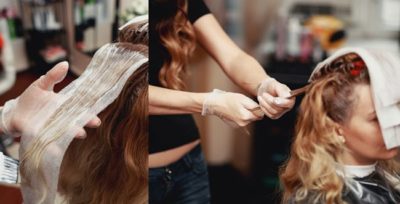
Near the face we dye the curls in the main color.- In the parietal part, we begin the dyeing process from the hair bordering the occipital region. Tones alternate in the direction from the back of the head to the forehead.
- Leave the dye on your hair for the required time specified in the instructions.
- Remove the separating strips and wash off the paint without shampoo.
- Apply balm.
- We style our hair.
Do not use foil or a cap for highlighting ; the hair must breathe during the procedure. If you wish, you can try to carry out the procedure at home, but it is recommended to proceed in a lighter version.
Stages of coloring adapted for home use:
- Highlight with several light shades. It is recommended to use the zigzag or checkerboard method.
- Wash off the paint.
- Dry your hair with a towel.
- Color your hair with a basic tone.
- Rinse and apply balm.
- Do the styling.
Apply coloring only to dry and clean hair.
Coloring for dark hair
Dark hair gives a lot of scope for the imagination of its owners. To give them dynamics and brightness, you should use coloring. Using this coloring technique, curls can get absolutely any shade, from bright pink and blue to “sun highlights” with a reminder of the summer heat. In this article we will look at all types of coloring for dark hair, which shade to choose depending on your color type, how to colorize dark hair at home and how to properly care for dark hair with coloring in order to preserve the color for a long time. If your soul yearns for change, read our article, choose your option, be inspired by photos of colored dark hair of different lengths and change!
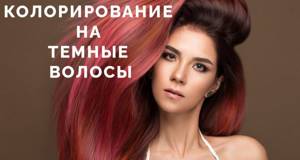
Coloring is dyeing hair in several different colors (from 2-3 shades to 20), during which the strands acquire a rich tone.
Both colors close to the natural tone and contrasting colors can be used. This technique works best on dark hair. And the darker they are, the more advantageous bright shades will look on them.
There are longitudinal and transverse coloring.
Transverse coloring is hair coloring, which aims to make a transition from dark hair to light hair or vice versa. Prominent representatives are ombre and sombre, in the first case the transition of colors is smooth, in the second - with a clear and sharp character.
Longitudinal coloring is reminiscent of highlighting, when paint is applied to a strand along the entire length, but with a greater number of shades.
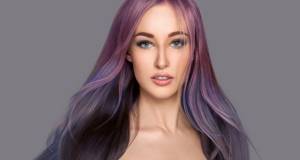
Popular types of coloring include babylights, highlights, ombre, sombre, balayage, bronding, chambray (coloring in bright shades of purple, red, green, etc. with a smooth or sharp transition) .
There is also full anime-style hair coloring (when all the hair becomes the same bright color), neon coloring, bangs coloring, zonal, pixel and even patterned, which can only be done by a professional master using stencils.
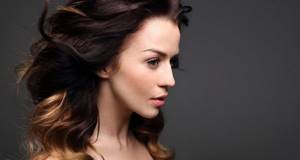
To choose the right color, you first need to determine your color type. If you don’t know who you are - Winter, Spring, Summer or Autumn, then look at the photo below, it will help you figure it out.
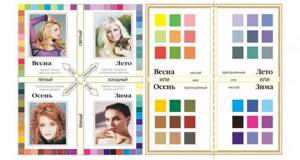
The cool color type includes shades of ash and platinum. Golden and nut colors suit warm colors. It all depends on age: women over 40 will appreciate light and calm tones, for example, honey or milky colors; young girls with black hair can experiment with bright shades of blue, green, pink, red and purple.
How to choose coloring color
depending on natural hair color:
- if you have black or dark brown curls, then a palette of burgundy, purple and blue tones will suit you;
- if you are a brunette, then chocolate color is your everything.
depending on skin tone:
- if you have fair skin, give preference to copper and golden chestnut tones;
- if you have dark skin, choose dark colors.

Babylights, balayage or chambray look great with short hair.
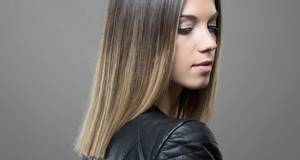
Medium hair is suitable for coloring using babylights, highlights, sombre, balayage, chambray or bronding techniques.
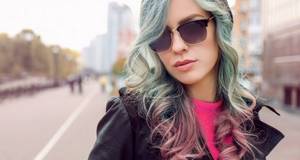
On long hair, any experiment will turn out successfully. But you shouldn’t take on coloring yourself, because coloring long hair requires some skill and experience.

The technique of coloring dark hair at home involves several stages:
Stage 1. Selecting paint
If you are doing this for the first time, then it would be reasonable to buy a ready-made kit for home coloring. If you haven’t found the right one, then carefully select the paint of the required tones separately.
Stage 2. Preparation
Check if you are allergic to any of the ingredients. Apply a little paint to the crook of your elbow and observe how the skin reacts. If no itching, redness or rashes appear within 2 days, then you can safely dye your hair.
Don’t forget that coloring is done on dirty hair, so don’t wash it for 3 days before the procedure.
Stage 3. Coloring
- Comb thoroughly and divide your hair into zones. In each of them, select the strands that you are going to dye;
- prepare hair dye and foil;
- apply paint to the strand from top to bottom, do not make clear boundaries;
- wrap the dyed strand in foil and bend it in half;
- if you have bangs and are going to color them, remember that they should be the last;
- after 15 minutes, apply paint to each strand again, but slightly above the painted area;
- after another 20 minutes, repeat the procedure, dyeing another couple of centimeters of strands above the already dyed ones;
- after 15 minutes you can remove the foil and wash your hair, always with shampoo;
- don't forget about the balm;
- Dry your hair, not necessarily using a hairdryer.
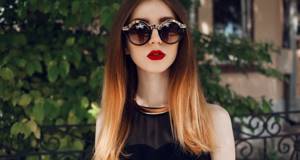
The coloring effect on dark hair in all its brilliance lasts about 4 weeks. To maintain brightness, follow simple rules for caring for your hair after coloring:
- Use shampoo for colored hair, conditioner and restoration mask.
- When drying with a hairdryer, use a special heat protectant.
- Wear a cap in the pool, chlorine can ruin your hair color.
- In the summer, do not stay in the sun for long without a hat; bright shades of colored strands are especially susceptible to fading.
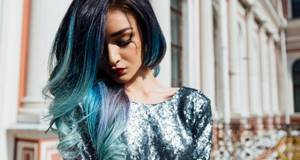
Hair care after highlighting
As a rule, 3D highlighting stays on the hair for quite a long time and requires correction once every 2-3 months.
Regrown roots do not spoil the impression of the hairstyle due to the smooth transition of shades. In order to maintain the beauty and health of hair, careful care is required, preferably with products from a professional line.
Recommended:
- use products for highlighted or colored hair;
- do not neglect homemade masks and essential oils;
- apply gentle curling and styling, use special Velcro curlers, boomerang curlers;
- Minimize the use of hair dryers and stylers.
Sea buckthorn oil can cause yellow tint on bleached hair.
Rules for hair care after coloring using 3D technique
Like any dyed hair, strands after 3D coloring require proper care.
In order for the color to remain pleasing for a long time, you need to keep an eye on it.
1. Use a mild shampoo
With every wash, hair color inevitably fades and fades. Special shampoos from the lines for colored hair will help to seriously slow down this process.
Sulfate-free Vitamino Color Soft Cleanser, L'Oréal Professionnel , transforms into a soft mousse to gently remove impurities.
, Blondifier Gloss, L'Oréal Professionnel is suitable , which preserves the multifaceted shine of light shades.
And for those who have very sensitive hair, experts recommend Chromatique Riche shampoo-bath, Kérastase , which not only gently cleanses the hair, caring for it thanks to vitamin E and oils in the composition, but also keeps it clean longer.
Shampoo-bath Chromatique, Kerastase
More details
2. Don’t neglect the conditioner
Conditioner is not a marketing gimmick, but a necessary product for every hair type. The fact is that cleansing agents even in the mildest shampoo open up the hair scales. In order for the hair to be shiny and smooth, these scales must be closed and fixed in this state. This is why hair conditioners were invented.
Colorlast from Biolage - with a paraben-free formula specifically for colored hair.
Color Extend Magnetics, Redken - with a protein complex and amino ions that create a protective barrier.
Color Obsessed, Matrix - with antioxidants that protect strands from fading.
3. Be sure to use nourishing masks
masks come in handy - products with a high concentration of nutrients.
The most fragile strands will be helped by the powerful Inforcer, L'Oréal Professionnel - a mix of vitamin B₆ and biotin strengthens the hair structure.
The Redken brand has innovative fabric hair masks - All Soft Mega reduces hair breakage by 60% in just 10 minutes.
Another powerful SOS product is the Thérapiste mask, Kérastase . It stimulates protein synthesis, supplies the follicle with energy, and as many as six amino acids in the composition fill damaged areas.
Therapiste mask, Kérastase
More details
4. If necessary, apply tinted care
Often, even with proper care, some shades change: cold blondes are especially unstable.
To prevent yellowness from bothering you, use tinted Color Extend Graydiant, Redken will help the coldest light shades
, with direct action pigment).
L'Oréal Professionnel has masks with shots: for example, a special restoring mask for blondes Blondifier , with purple fluid additive Powermix Shot .
Touche Chromatique tint treatments - from copper to cool brown .
Tinted care Touche Chromatique Copper, Kérastase
More details
Tinted care Touche Chromatique – Cool brown, Kérastase
More details
Who better not to do it?
3D highlighting is a great way to refresh your image , keep up with modern trends, but still, do not forget that some women are better off refraining from this coloring technique:
- With weakened, dry, split ends, there will be no positive effect, rather the opposite. Before dyeing, you need to tidy up your hair and get rid of split ends.
- If you have dyed with henna or basma, you will not get the desired shade. Sometimes the curls can take on a greenish or reddish color.
3D highlighting is one of the most modern methods of coloring ; it gives a very interesting effect of natural tints with luxurious hair volume. But it is important to remember that this effect can only be achieved by a professional master, subject to a strict coloring algorithm.
Pastel shades
With three-color highlighting in pastel colors, the hair is subject to a noticeable chemical load, since it is subject to constant and repeated exposure to strong dyes. This coloring procedure can only be entrusted to real experts in their field, in whose professionalism you are absolutely confident. Such a specialist is well versed in new technologies that allow for gentle hair coloring with maximum use of strengthening agents.
After the highlighting process, it is recommended to carry out restorative procedures. As for the quality of dyes, this is not even negotiable. On the advice of the hairdresser, a base color is selected, onto which a lighter shade is applied. If all of the above points of three-color highlighting are observed, the result will be amazing: the depth of color is guaranteed, as is the presence of visual volume, airiness and extraordinary charm due to the presence of three colors on the hairstyle at once.
Regarding the ultra-modern technique of three-color highlighting, it can be used even for natural blondes, which are now becoming increasingly rare. Of course, it is difficult to achieve a natural look after painting, but by creating contradictory shades you can give the image a completely unique style and a fashionable modern look.
Light, so-called sunny shades will be relevant in 2015: crystal white, golden wheat and others.
